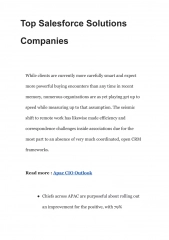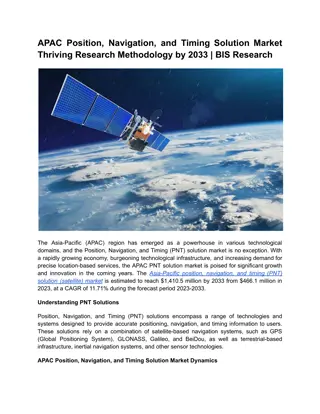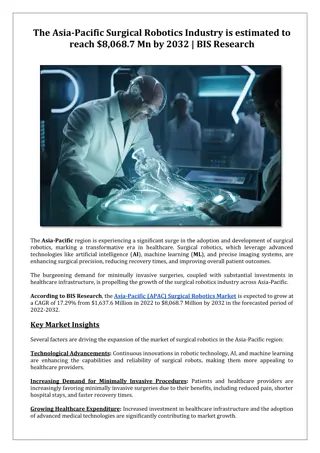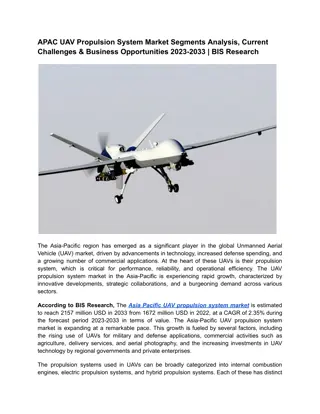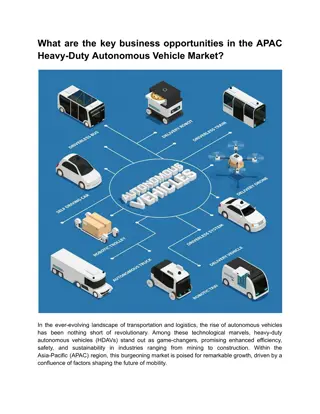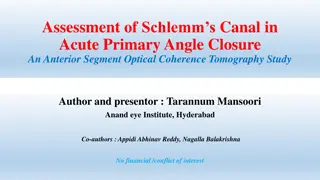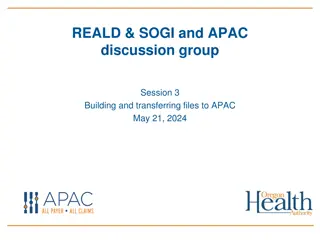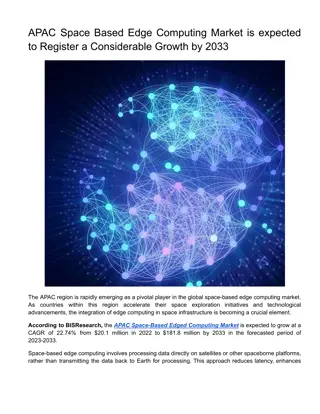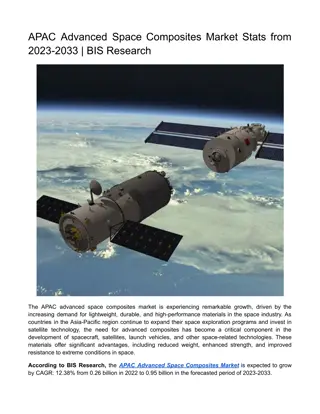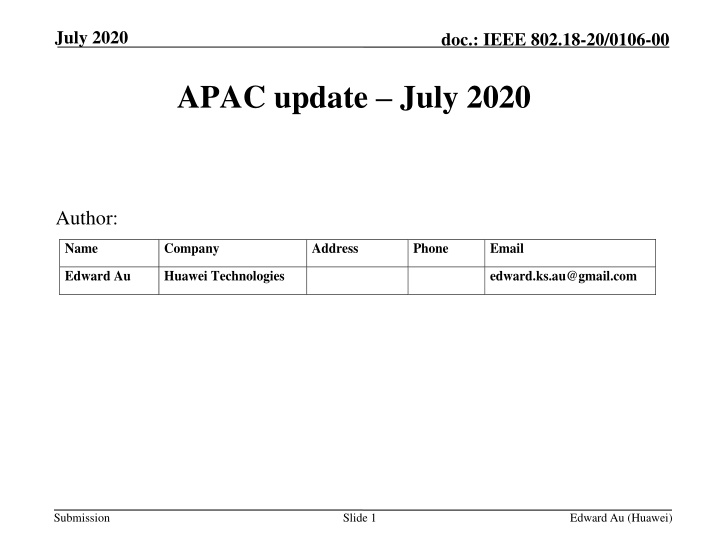
High-level Overview of APAC Activities Related to Wi-Fi and WPAN, July 2020
This document provides a detailed overview of APAC activities related to Wi-Fi and WPAN between May and July 2020, focusing on key consultations and proposed changes in frequency allocation in Korea. The slides presented by Edward Au from Huawei cover discussions on enabling high-quality data services and accelerating the adoption of 5G convergence services using 5G-class unlicensed technology, such as WiFi 6E and 5G NR-U, in the 6 GHz band. Consultations on revising technical standards for radio equipment in the 5 GHz and 6 GHz bands are highlighted, with key details and proposed changes outlined. Visit the provided URLs for further information and details.
Download Presentation

Please find below an Image/Link to download the presentation.
The content on the website is provided AS IS for your information and personal use only. It may not be sold, licensed, or shared on other websites without obtaining consent from the author. If you encounter any issues during the download, it is possible that the publisher has removed the file from their server.
You are allowed to download the files provided on this website for personal or commercial use, subject to the condition that they are used lawfully. All files are the property of their respective owners.
The content on the website is provided AS IS for your information and personal use only. It may not be sold, licensed, or shared on other websites without obtaining consent from the author.
E N D
Presentation Transcript
July 2020 doc.: IEEE 802.18-20/0106-00 APAC update July 2020 Author: Name Company Address Phone Email Edward Au Huawei Technologies edward.ks.au@gmail.com Submission Slide 1 Edward Au (Huawei)
July 2020 doc.: IEEE 802.18-20/0106-00 Background This slide deck provides a high-level overview of the activities in APAC (related to Wi-Fi and WPAN) between May and July 2020. Submission Slide 2 Edward Au (Huawei)
July 2020 doc.: IEEE 802.18-20/0106-00 Korea MSIT Consultation on Revision of the Table of Frequency Allocation on 5 GHz and 6 GHz Comments due on August 24, 2020. For details: http://english.msip.go.kr/web/msipContents/contentsView.do?cateId =_law4&artId=2942267 Motivation: To enable high-quality data service and accelerate the adoption of 5G convergence services using 5G-class unlicensed technology (e.g, WiFi 6E, 5G NR-U) in the 6 GHz band. Proposed change: Allow specific low-power wireless access systems including wireless LAN to be operated in the 5725-5850 MHz and 5925-712 MHz frequency bands by amending K37E in the Table of Frequency Allocation. Submission Slide 3 Edward Au (Huawei)
July 2020 doc.: IEEE 802.18-20/0106-00 Korea MSIT Frequency band Usage 5725-5850 MHz Fixed, Wireless detection, Mobile 5.150 5.453 Low power wireless data communication system K37F Object detection sensor K40A Low power wireless access system including wireless LAN K37E 5925-6700 MHz Fixed Fixed satellite (Earth to Space)(Space to Earth) 5.441 5.458B Broadcasting K151 Fixed microwave relay K151A UWB K125B Low power wireless access system including wireless LAN K37E K151D 7075-7190 MHz Fixed Mobile Broadcasting K151 Fixed microwave relay K151A UWB K125B Low power wireless access system including wireless LAN K37E K151D Submission Slide 4 Edward Au (Huawei)
July 2020 doc.: IEEE 802.18-20/0106-00 Korea MSIT Consultation on Revision of the Table of Frequency Allocation on 5 GHz and 6 GHz (cont d) Proposed change to K37E: The frequency bands of 5150 to 5350 MHz, 5470 to 5850 MHz and 5925 to 7125 MHz are used as low power wireless devices (for wireless access systems (WAS) including wireless LANs) and apply frequency sharing technology according to the relevant ITU-R recommendations. Submission Slide 5 Edward Au (Huawei)
July 2020 doc.: IEEE 802.18-20/0106-00 Korea MSIT Consultation on revised technical standards for radio equipment in 5 GHz and 6 GHz bands Comments due on August 24, 2020. For details: http://english.msip.go.kr/web/msipContents/contentsView.do?cateId =_law4&artId=2942268 Motivation: To enable high-quality data service and accelerate the adoption of 5G convergence services using 5G-class unlicensed technology (e.g, WiFi 6E, 5G NR-U) in the 6 GHz band. NOTE the same motivation as the previous consultation. Submission Slide 6 Edward Au (Huawei)
July 2020 doc.: IEEE 802.18-20/0106-00 Korea MSIT For radio equipment in 5925-6425 MHz: Occupied frequency bandwidth Power density including absolute antenna gain Remarks 0.5 MHz min 20 MHz max 1 dBm/MHz or less The power density including the absolute gain of the antenna should be an average value Drones are prohibited. Built-in wireless devices used in automobiles are allowed to operate in 6085-6425 MHz. 20 MHz min 40 MHz max -2 dBm/MHz or less 40 MHz min 80 MHz max -5 dBm/MHz or less 80 MHz min 160 MHz max -8 dBm/MHz or less Submission Slide 7 Edward Au (Huawei)
July 2020 doc.: IEEE 802.18-20/0106-00 Korea MSIT For indoor wireless devices in 5925-7125 MHz: Occupied frequency bandwidth Power density including absolute antenna gain Remarks 160 MHz 2 dBm/MHz or less The power density including the absolute gain of the antenna should be an average value Limited to equipment that is installed and operated by being connected to the power in the building or connected to another equipment. Prohibited use in vehicles such as automobiles, aircraft, railroads, ships, and drones Submission Slide 8 Edward Au (Huawei)
July 2020 doc.: IEEE 802.18-20/0106-00 Korea MSIT New conditions: Frequency tolerance deviation should be within 20 10-6. Out-of-band emission should have an average power density of 27 dBm/MHz or less, including the absolute antenna gain. For peak value, it should be less than -34 dBm/MHz at a frequency outside the 5925-6425 MHz band. Modulation type should be digital. Listen before talk should be used. Submission Slide 9 Edward Au (Huawei)

